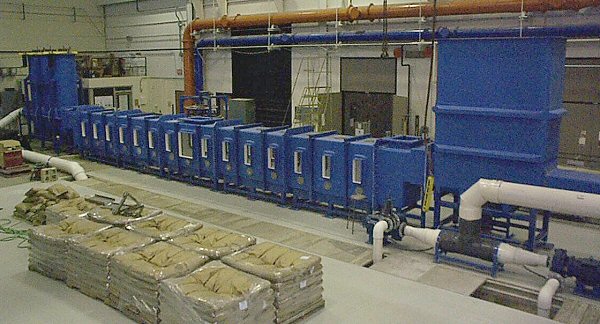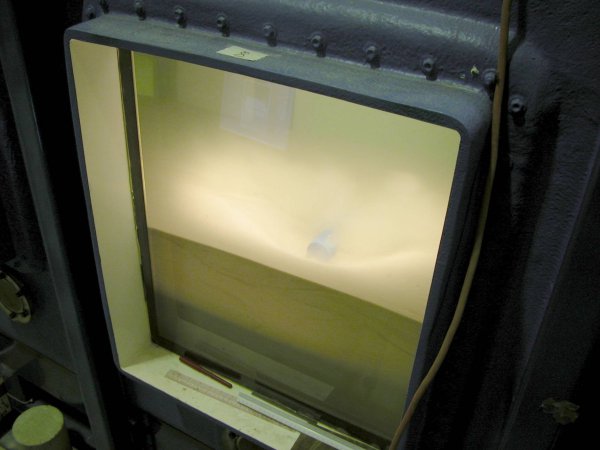Large Oscillatory Water-Sediment Tunnel
This flume, one of the largest of its kind in the world, is currently being used to study flow-object interactions and moveable bed problems, along with sediment transportation, ripple formation, incipient motion, bedload and suspended sediment motion. In the near future, boundary layer flows and turbulence studies are planned.
The tunnel is U shaped, with one leg containing the three pistons and the other a free leg, called the receiver chamber. Tests can be performed under pure oscillatory flow conditions (waves) or a steady current can be superimposed upon the flow using two variable speed pumps.
The tunnel measures 24.3-m long, 0.8-m wide (interior width), and 1.2-m high (interior height). The maximum water height is 5.6-m and the piston stroke is 1.4-m. Each piston is driven by a separate electric servo-motor and is capable of producing a maximum water velocity in the tunnel of 2 m/s, a maximum acceleration of 6 m/s2, with a period of 1 s to 18 s. The pumps are two close coupled, end suction centrifugal pumps with a maximum combined discharge of 240 l/s. The standard sediment bed depth is 0.6-m.
Past research in this facility includes development of a new relationship for the determination of the friction coefficient in oscillatory flows1, an examination of ripple morphology under oscillatory flows2, and the mechanics of cylinder burial under combined oscillatory flows and current3.
1 Pedocchi, F. and Garcia, M.H. 2009 Friction coefficient for oscillatory flow: the rough-smooth turbulent transition. Journal of Hydraulic Research, 47(4), 438-444.
2 Pedocchi, F. and Garcia, M.H. 2009 Ripple morphology under oscillatory flow: 2. Experiments. Journal of Geophysical Research – Oceans, 114, C12015.
3 Catano-Lopera, Y.A., Demir, S.T. and Garcia, M.H. 2007 Self-burial of short cylinders under oscillatory flows and combined waves plus currents. IEEE Journal of Oceanic Engineering, 32(1), 191-203

